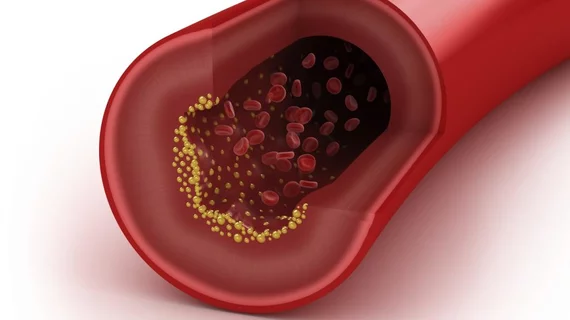Arterial stiffness may predict type 2 diabetes risk better than high blood pressure
Arterial stiffness may be a more effective way to predict a patient’s risk of developing type 2 diabetes (T2D) than blood pressure (BP) readings, according to new research published in Hypertension.[1]
The study’s authors reviewed data from more than 11,000 patients. All patients were part of the Kailuan Study, an ongoing analysis of more than 100,000 adults in China who received care at one of 11 different hospitals. BP measurements and blood samples have been taken from each participant since 2006. In 2010, researchers also started using brachial-ankle pulse wave velocity to assess each participant’s arterial stiffness. Hypertension was defined as a resting blood pressure of 140 mm Hg/90 mm Hg or greater.
Overall, after a median follow-up period of a little over 6 years, the group found that participants with elevated arterial stiffness and hypertension had the highest risk of developing T2D. Participants with elevated arterial stiffness and normal BP also saw an increased risk of T2D — higher than the risk among participants with high BP and normal arterial stiffness.
“We were surprised to find that people with increased arterial stiffness were more likely to develop T2D, whether they had high BP or not,” senior author Anxin Wang, PhD, a specialist with the China National Clinical Research Center for Neurological Diseases, said in a prepared statement from the American Heart Association (AHA). “These results provide strong evidence that measuring arterial stiffness may be a better predictor than BP in determining an individual’s future risk of T2D.”
“This finding that arterial stiffness increases the risk for developing T2D supports our existing understanding of cardiovascular disease and Type 2 diabetes,” added Eduardo Sanchez, MD, MPH, the AHA’s chief medical officer for prevention. “We look forward to future investigations about the mechanisms between arterial stiffness and T2D risk.”
More AHA information on risk factors for T2D is available here.
Related Heart Health Content:
Cardiologists join the FDA’s fight against menthol cigarettes, flavored cigars
Mediterranean diet outperforms low-fat diet for cardiovascular disease prevention
Small wearable device monitors blood sugar, alcohol and lactate levels at the same time
Flu shots lower CVD risk, new meta-analysis confirms
VIDEO: Use of CT to assess coronary plaques
Reference:

